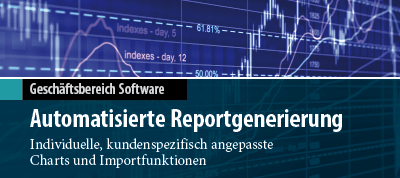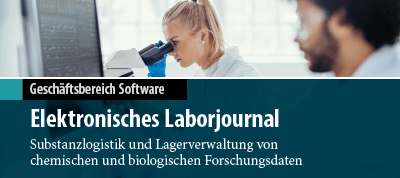Versionshistorie von DFTB: 2018 - 2013
Im Folgenden sehen Sie einen Überblick über die neuen Schlüsselfunktionen der jeweiligen Version.
DFTB 2018
Neu in DFTB 2018
- Elastic tensor and related properties (e.g. Bulk modulus) (via AMS)
- Linear transit and PES scan (via AMS)
- Geometry optimization under pressure (via AMS)
AMS: a new driver program
In the 2018 release of the ADF Modeling Suite a new driver program called AMS is introduced. It is recommended to first read the General section of the AMS Manual.
If you use DFTB exclusively via the Graphical User Interface (GUI), this change should not create any issues. If, on the other hand, you create input files by hand (or you use DFTB via PLAMS), then you should be aware that shell scripts for DFTB-2017 and previous versions are not compatible with DFTB-2018 and have to be adjusted to the new setup.
The example below shows how a shell script for DFTB-2017 is converted to DFTB-2018.
DFTB-2017 shell script (obsolete)
#!/bin/sh
# This is a shell script for DFTB-2017 which will not work for DFTB-2018
$ADFBIN/dftb << EOF
Task
RunType GO
End
System
Atoms
H 0.0 0.0 0.0
H 0.9 0.0 0.0
End
End
DFTB
ResourcesDir Dresden
End
Geometry
iterations 100
End
EOF
DFTB-2018 shell script
#!/bin/sh
# This is a shell script for DFTB-2018
# The executable '$ADFBIN/dftb' is no longer present.
# You should use '$ADFBIN/ams' instead.
$ADFBIN/ams << EOF
# Input options for the AMS driver:
System
Atoms
H 0.0 0.0 0.0
H 0.9 0.0 0.0
End
End
Task GeometryOptimization
GeometryOptimization
MaxIterations 100
End
# The input options for DFTB, which are described in this manual,
# should be specified in the 'Engine DFTB' block:
Engine DFTB
ResourcesDir Dresden
EndEngine
EOF
DFTB 2017
Neu in DFTB 2017
- New features:
- spin-polarized calculations
- DFTB3 for periodic systems
- l-dependent SCC-DFTB and TD-DFTB
- user defined masses in the input file, allowing the calculation of systems with different isotopes of the same element
- calculation of fat-bands
- massively improved performance of the D3-BJ dispersion correction for periodic systems
- improved performance of lattice optimizations
- Mayer bond order analysis
- interface to the NBO6 program
- support for parameter sets with only partially present repulsive potentials (e.g. halorg-0-1)
- support for restarting geometry optimizations
- reading of initial Mulliken charges from the input file
- All DFTB.org parameter sets are now Creative Commons licensed and no longer require a special license agreement. The following new parameter sets are available:
- 3ob-ophyd: modified O-P for 3ob (improves description of pentavalent phosphorus species)
- auorg: for gold-thiolate compounds
- borg: boron systems (solids and molecules)
- halorg: for halogens
- magsil: for chrisotyle nanotubes
- New defaults:
- the default model Hamiltonian is now SCC-DFTB (used to be DFTB0)
- k-space sampling is now disabled by default for periodic systems (only gamma-point will be sampled)
- Bugfixes:
- fixed an issue with the band structure calculation for SCC-DFTB
- fixed lattice optimization for Gamma-only periodic DFTB calculations
DFTB 2016
Neu in DFTB 2016
- New DFTB parameter sets:
- QUASINANO2015
The QUASINANO2015 parameter set provides a consistent set of atomic pair parameters for all elements up to Ca including energies and nuclear forces (http://pubs.acs.org/doi/10.1021/acs.jctc.5b00702). - 3ob-3-1 from DFTB.org (Br, C, Ca, Cl, F, H, I, K, Mg, N, Na, O, P, S, Zn)
This parameter set includes a wide set of state-of-the-art DFTB parameters for accurate calculations of organic and biochemical systems.
- QUASINANO2015
- Analytical excited state gradients for TD-DFTB
This feature allows for very fast calculations of excited state geometries and vibrational frequencies. These can be used for the calculation of Franck-Condon factors and the prediction of vibrational fine structure in electronic absorption and emission spectra. - Vibrationally resolved UV/Vis spectroscopy
The corresponding spectroscopic properties can now also be calculated within DFTB but at a much higher efficiency compared to the variant available in ADF. - Improved SCC convergence with the DIIS method
A more stable and efficient iterative solution for the self-consistent atomic charges within DFTB. - H-X damping
This method, used in DFTB3 to improve the description of covalent chemical bonds involving hydrogen atoms, is now available for all other DFTB SCC variants.
Scripting
- ASE interfaced with the ADF modeling suite programs
The Atomic Simulation Environment (ASE) tool collection suite was designed as a flexible, easy-to-use, and customizable approach for the manipulation of quantum chemical models as well as for setting up and running the calculations required and for the analysis of the final results. D. Coupry and T. Soini at SCM have built ASE calculators for the main codes in the ADF Modeling Suite, thus opening up several of the methods in ASE. - PLAMS: Python Library for Automating Molecular Simulation
The PLAMS Python library, developed at SCM by Michał Handzlik, aims at facilitating scripting and work-flow automation in molecular modeling. PLAMS takes care of input preparation, job execution, file management and output processing and comes with interfaces to ADF, BAND and DFTB. SCM is making PLAMS available to the community as open-source (LGPL), contact SCM for details. Together with the related pyADF project led by Prof. Christoph Jacob, PLAMS is one of the components in the ongoing open-source project Computational Chemistry made Easy , led by Prof. Lucas Visscher, in which SCM also participates (contact Prof. Visscher or SCM for more information). - FlexMD (Flexible multi-scale Molecular Dynamics simulation): new features
FlexMD is a python library developed by Rosa Bulo's group at Utrecht University for molecular dynamics, specialized in multi-scale simulations. It is currently an expert option that requires scripting experience. The 2016 release includes a tabulated PBE-based force field for water suitable for QM/MM simulations. The center of the QM region can now also be defined more flexibly, e.g. as the position of a hydronium or hydroxide ion, important for simulating proton transfer processes. - adfprep and adfreport : New features for the command line tools adfprep (job preparation) and adfreport (results extraction):
- Support for ADF, BAND, ReaxFF, DFTB, UFF, Mopac
- Fragment support
- Geometry changes, modify atom types, add groups
- Support for SDF files
DFTB 2014
Neu in DFTB 2014
- TD-DFTB excitation energies
DFTB now allows excited state calculations for molecular systems using single orbital transitions as well as time-dependent DFTB. Singlet-singlet as well as singlet-triplet excitations can be calculated. A filter can be used to reduce computational costs, for example by using only single orbital transitions that have a minimal oscillator strength. The PRIMME library is used for finding the lowest eigenvalues of a matrix with the Davidson method. - Constrained optimizations
Geometry optimizations can be constrained with constraints for the distance between two atoms, an angle defined by three atoms, or a dihedral angle defined by four atoms. - QUASINANO2013.1 parameters
The QUASINANO2013.1 set of DFTB parameter files available in the ADF package are designed by Mohammad Wahiduzzaman et al. contains parameters for a large part of the periodic table (no f-elements). Note that the QUASINANO2013.1 set only contains the electronic part of the interaction, so that only the spectrum for a given geometry can be calculated, but no total energy, and thus also no forces. These parameters can be used in TDDFTB calculations, for example. - Density matrix purification and sparse matrix algebra
An alternative way to compute the density matrix corresponding to a given Hamiltonian is by means of the density matrix purification method. This method scales linearly with the system size when the Hamiltonian matrix is sparse and the HOMO-LUMO gap is large enough. This makes it especially useful for modeling large insulator or semi-conductor systems. - Conductance
The conductance program has been added. It is a program to calculate coherent transport in extended junctions consisting of two semi-infinite electrodes separated by a molecule using the DFTB method combined with the nonequilibrium Green's Function (NEGF) formalism.
DFTB 2013
Neu in DFTB 2013
- Car-Parrinello (experimental feature)
- Conjugate gradients geometry optimization
- Visualization of DFTB orbitals (only for "demo" parameters)
- Partial density of states, PDOS
- D3-BJ van der Waals dispersion correction added
- (Parallel) performance improvements
- 3OB parameters for DFTB3 method included














